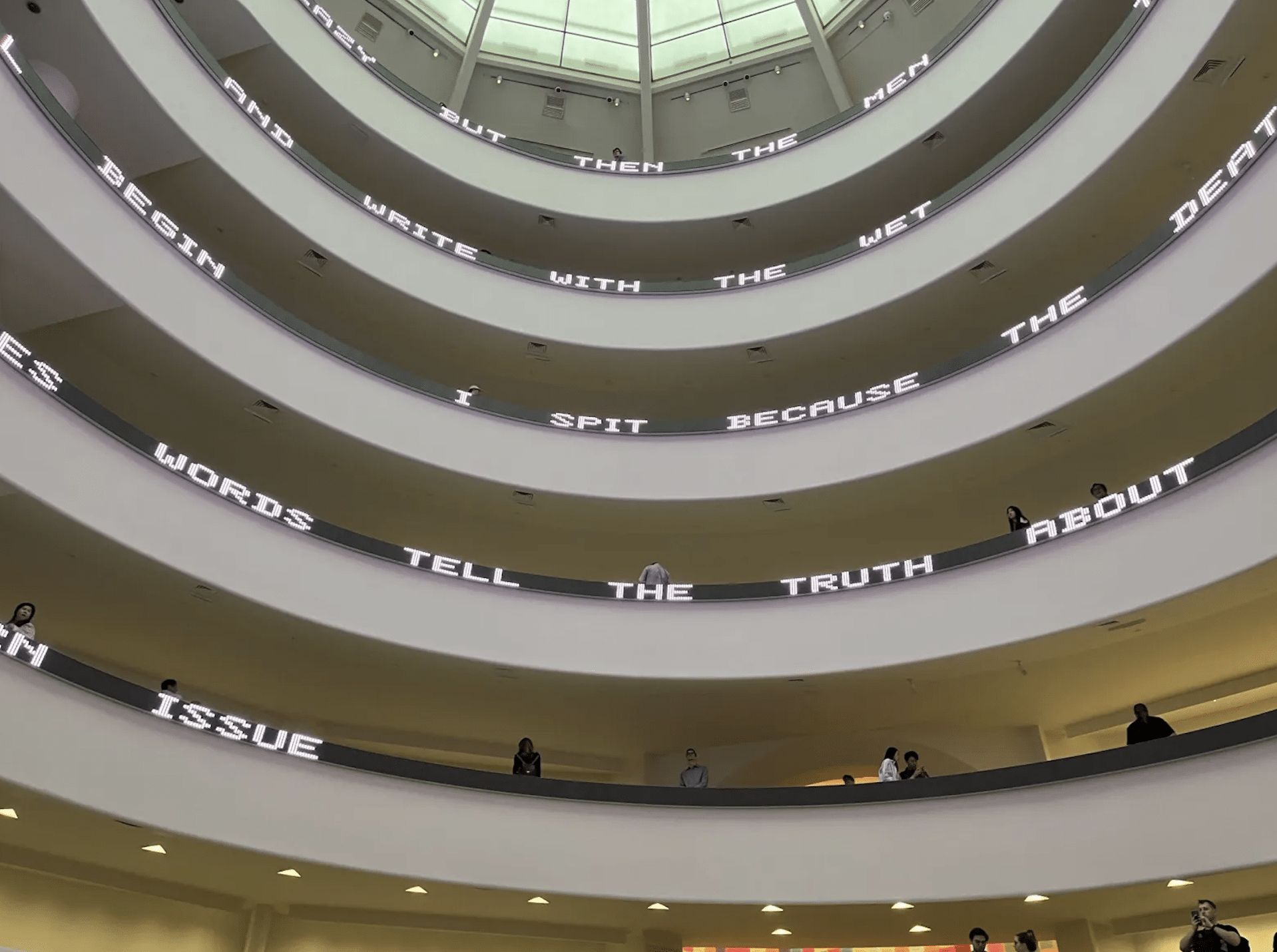In a time where history and its voiced narratives matter more than ever before, Jenny Holzer’s Guggenheim exhibit, pointedly titled Light Line, is charged with layers of power and relevance. The collaboration opened in May and runs until September 29, 2024.
Light Line is not Holzer’s first collaboration with the Guggenheim. Nearly thirty-five years ago, the artist created a spiraling LED display for the museum exhibition featuring a flashing LED sign with changing colors, fonts, and special effects. The new iteration of Holzer’s electronic sign, Installation for the Solomon R. Guggenheim Museum (1989/2024), revitalizes the building with an updated and expanded scrolling text display, incorporating language from her iconic series, such as Truisms and Inflammatory Essays. Light Line also showcases a selection of Holzer’s works from the 1970s to the present, including paintings, works on paper, plaques, and stone pieces. Additionally, Lee Quiñones, a pioneering street artist and longtime collaborator of Holzer’s, has graffitied the museum’s High Gallery walls over the artist’s colorful Inflammatory Essays posters.
The limits and lengths of the written word
I will admit that I had my doubts going into this show. Perhaps I have become somewhat of a pessimist myself when it comes to deciphering the words that allegedly tell the story of our past, present, and future world, especially when it comes to those presented in a political context. All too often, such fragments either tell too much or not enough; they attempt to elucidate truth through exclusion, diluting everything on the periphery.
Holzer’s display is very much a product of our current time. Slogans like “because there is no god someone must take responsibility for men” and “I see you, I watch you, I scan you” speak to issues of war and surveillance, power and existentialism, abuse and refuge.
Graffiti reflections on war
Personally, it was also impossible to read lines like “Docile so he is fast. Dying from knowing” without thinking about the current state of the world and the slaughtered children of Gaza. In fact, murmurs of genocide are traced throughout the entire showcase. While not immediately obvious, powerful lines penned by Quiñones, featured on wheat-paste posters on the gallery’s first floor, are all drawn from or centered on Gaza, as well as texts from war-torn regions like Ukraine and Syria.
As I walked along the curved walls of the Guggenheim, the critical, slippery words acted as a framework for my own associative constructions, ones rooted in both personal and collective memories. To me, this is where the intensity of this show lies. It is as much a commentary on the trials and tribulations of society as it is about human emotion. It is a show about grief.



